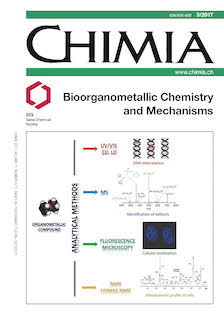Mechanistic Insights into Gold Organometallic Compounds and their Biomedical Applications
DOI:
https://doi.org/10.2533/chimia.2017.92Keywords:
Biomedical applications, Gold organometallic compoundsAbstract
The application of gold in medicine can be traced back several thousand years and Au(i) compounds have been used in the treatment of rheumatoid arthritis since the last century. Recently research into gold-based drugs for a number of human diseases has seen a renaissance due to their markedly different modes of action with respect to the classical platinum chemotherapeutic compounds. Within this research area, organometallic gold complexes have been particularly explored, mainly due to their higher stability in physiological conditions guaranteed by the presence of a direct Au–C bond. Thus, a number of compounds have been tested for their uses as anticancer, antibacterial, antiprotozoal as well as anti-HIV agents. In this review a selection of the main results obtained on the synthesis, chemical properties and biological activities of two of the most explored families of organometallics – Au(i) N-heterocyclic carbenes (NHCs) and cyclometalated Au(iii) compounds – are summarized. Their structure–activity relationships and modes of action at the cellular level are also discussed, which constitute the basis for future drug design.Downloads
Published
2017-03-29
How to Cite
[1]
S. Jürgens, A. Casini, Chimia 2017, 71, 92, DOI: 10.2533/chimia.2017.92.
Issue
Section
Scientific Articles
License
Copyright (c) 2017 Swiss Chemical Society

This work is licensed under a Creative Commons Attribution-NonCommercial 4.0 International License.







